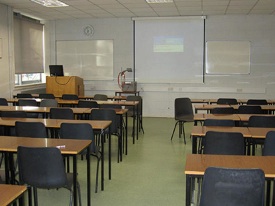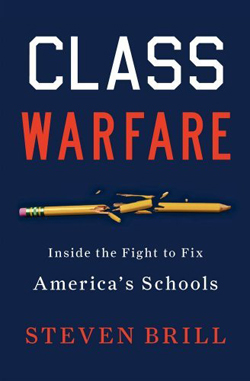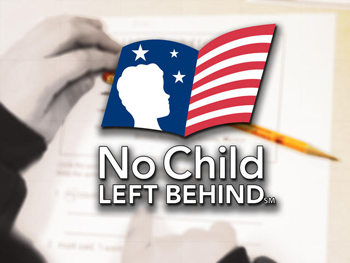What can we expect in the world of public education in 2012? (For a good review of what happened in 2011, check out this link.) I’ll start by considering three nagging questions.
1. Will this be the year that some school districts say ‘No mas!” to No Child Left Behind’s harsh rules?
2. Will we have that long-awaited national conversation about the goals of public education?
3. And will political leaders rise up against the excesses of for-profit education, so effectively documented in the New York Times (December 13, 2011), where we learned that the school superintendent of one for-profit charter chain that enrolls 94,000 students is paid $5,000,000 a year? (By contrast, Dennis Walcott, who is responsible for over one million New York City public school students, earns $213,000 a year.)
Sadly, I fear that the answer to those three questions is NO, NO and NO. Professional educators — who are generally reactors, not actors — will be busy trying to keep up with the latest new new thing (this year it’s the Common Core). I don’t expect rebellious behavior from superintendents and school boards, no matter how much they claim to be chafing under NCLB. Expect instead a further narrowing of the curriculum, more testing, larger classes, and the continued heroic behavior of most teachers under difficult circumstances.
Because this is an election year, the politics of public education are even crazier than usual, meaning that serious debate over the federal role in education won’t occur in 2012. Republicans are running against the very existence of the federal Department of Education, not debating subtleties of achievement measures. Not only is there zero chance of a national dialogue, the probability that anything useful will happen in the re-authorization of NCLB is pretty slim, unless it happens very early this year.
And because money talks in education, the for-profit crowd seems likely to continue its creeping expansion. A few more exposés like Stephanie Saul’s wonderful New York Times piece (linked above) won’t be enough to make us care about what amounts to the selling of other people’s children.

However, I can imagine four and perhaps five hopeful scenarios for 2012. In ascending order of importance (my judgement call), they are ‘Growth in Home Schooling,’ ‘Shutting Down Failing Charter Schools,’ ‘Board/Union Cooperation,’ ‘Whole School Evaluation,’ and ‘Blended Learning.’
I think it’s safe to predict more Home Schooling, fueled by a stagnant economy, policies that allow home-school students to participate in some school activities, and parental dissatisfaction with public education’s relentless focus on math and reading. Parents want more for their kids, and, if one parent can’t find a paying job outside the home, why not teach your own?
A larger number of failing charter schools will be closed in 2012. It’s happening now in California, New Orleans and Washington, DC. While the stated reason is often financial, as Andy Rotherham wryly notes, that’s how they got Al Capone. What that means: it’s easier to prove financial mismanagement than educational malpractice, but they often go hand in hand. If the non-profit public charter movement gets its act together and both raises and adheres to high standards, there’s no stopping this movement in 2012.
Board/Union Cooperation is not some dream scenario. It’s happening because the Race to the Top competition got the two sides talking, because the Gates Foundation and the U. S. Department are putting dollars behind it, and because quite a few leaders on both sides of the table are reading the tea leaves. Union leaders are well aware of the threat posed by charter schools, which do not have to unionize. Whether there’s pressure on school boards to stop their meddling is an open question, but there’s a trend toward decentralization that could grow. It’s not just Hillsborough, Florida, folks. This could be big in 2012. Maybe we will see shorter contracts that leave more decisions in the hands of the people in the school, instead of dictates from on high.
Whole School Evaluation is a sleeper for 2012 because all the public attention has been directed toward measuring the effectiveness of individual teachers (often so the ineffective ones can be removed). But quietly and behind the scenes, a few leaders have recognized that evaluating every teacher individually would entail testing every subject in every grade — and that’s both illogical and insane!
Concrete plans are being developed and implemented that use multiple measures to draw conclusions about how much or how little the entire school is progressing. And when a school rises, everyone involved — including office staff, custodians, attendance officers and the like — stand to benefit. Washington, DC, which has been in the spotlight (and sometimes the cross hairs) for its controversial “Impact” system, uses what seems like a sensible Whole School Evaluation approach. Esther Wojcicki and I wrote an op-ed, “Trust but Verify”, on this subject a few months ago, if you’d like to know more about how it could work.
But my personal pick in 2012 is Blended Learning, an idea whose time has certainly come. Sal Khan and the Khan Academy are the most visible (and most successful) manifestation, but I hear that forward-thinking educators in many districts are recognizing that, while kids are going to be in schools, there is no reason they cannot be connected with students across the district, the state, the nation and the world. What’s more, the traditional ‘stop signs’ of 8th grade, 9th grade, 10th grade and so forth are now meaningless. If a child can use technology to help her move through three years of math in one, she should be encouraged to dig deep and move at her own pace. And when a child needs a year-and-a-half to get through Algebra, that’s fine too.
There are plenty of hurdles to the widespread acceptance of Blended Learning, chief among them being habit and tradition. Teachers are going to need help with this, because they haven’t been trained or encouraged to ‘let go’ of control, and, frankly, Blended Learning can make life difficult for the adults in charge. After all, it requires close personal attention to individual kids, instead of the usual practice of grouping kids by their age. In this approach, learning is a two-way street that demands exploration and always entails failure. No doubt some are going to try to co-opt Blended Learning either to make money from it or to cut the labor force (teachers), but, all that aside, Blended Learning is my bet for education’s big winner in 2012.
So, there you have my predictions/hopes for 2012. What are yours?







